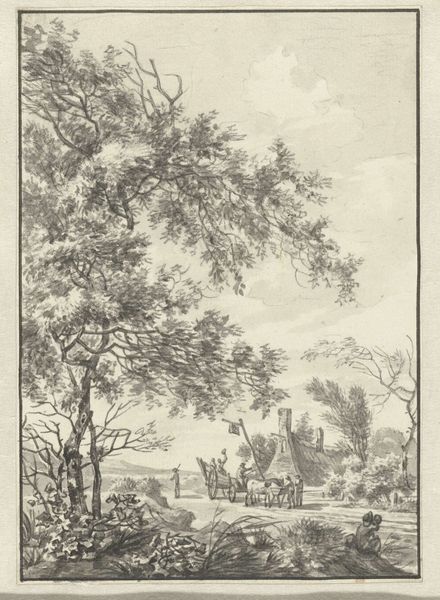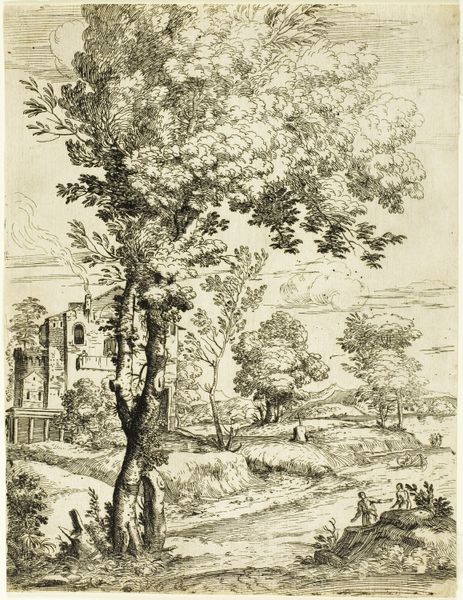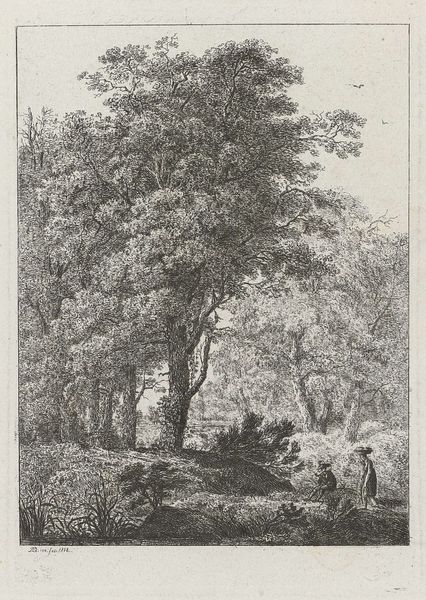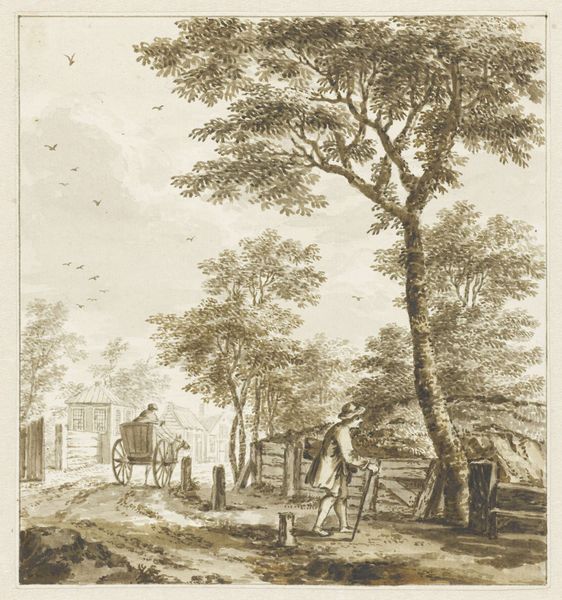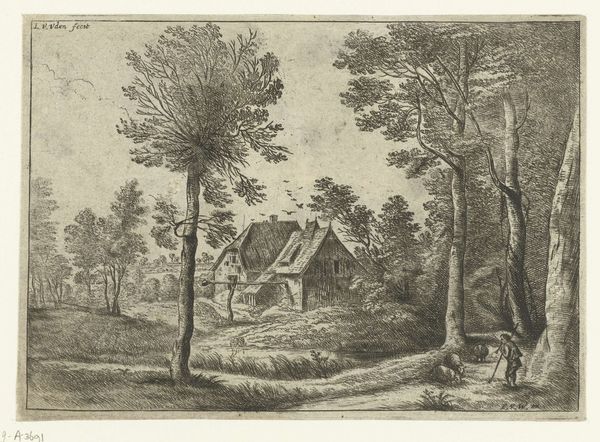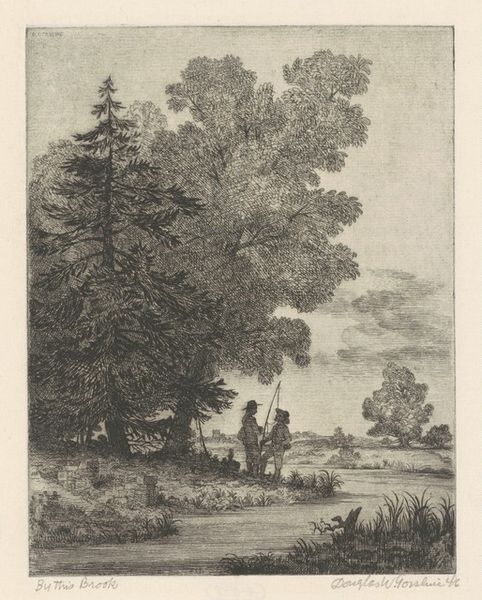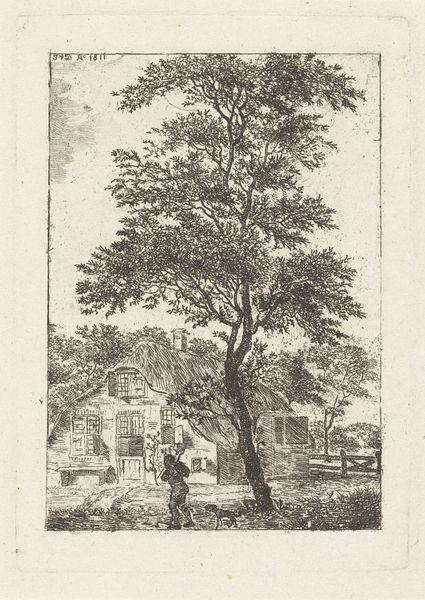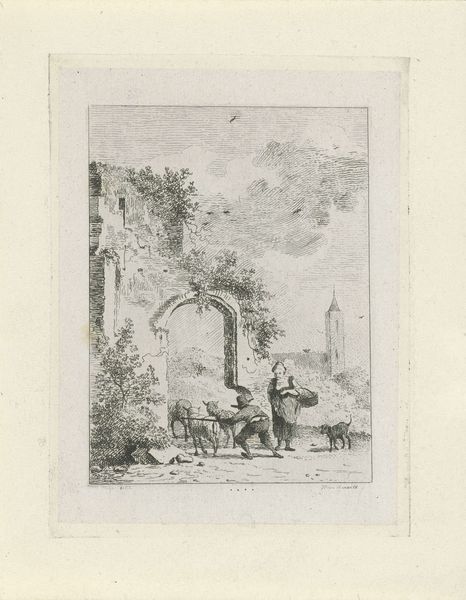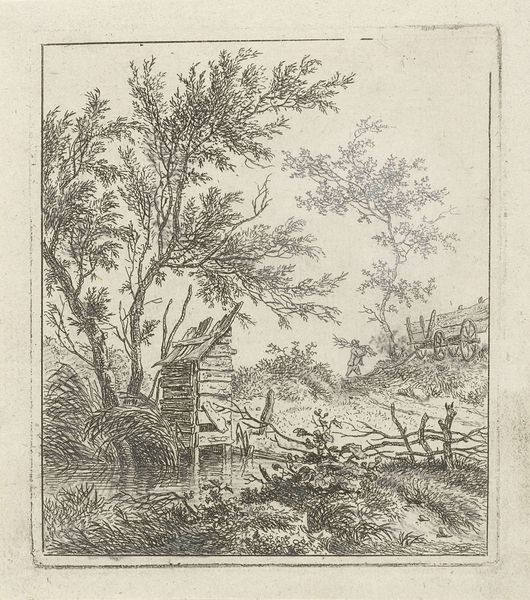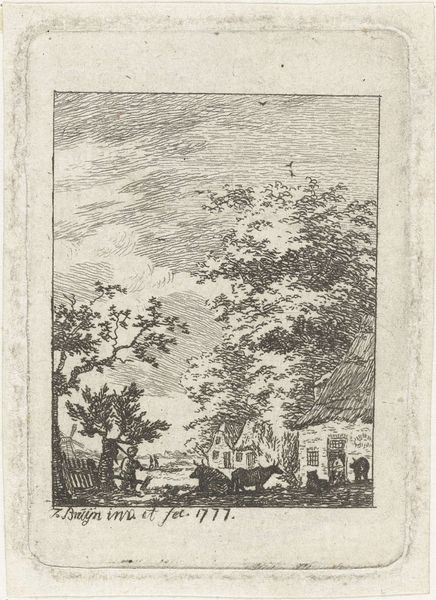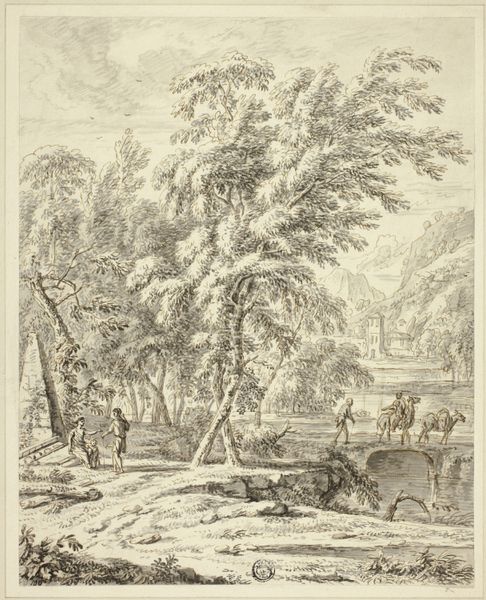
drawing, plein-air, paper, ink
#
drawing
#
plein-air
#
landscape
#
paper
#
ink
#
romanticism
#
park
Dimensions: height 210 mm, width 130 mm
Copyright: Rijks Museum: Open Domain
Curator: Right, let’s delve into Jean-Baptiste-Louis Cazin’s “Muur van een park met hoge bomen,” dating back to somewhere between 1782 and 1839. It’s a drawing, using ink on paper. Editor: Ah, instantly calming. Like stepping into a secret garden. The delicate lines almost whisper. It's more of a feeling than a place, you know? Curator: Indeed. Consider the implications of this almost furtive depiction of leisure in a period marked by significant socio-political upheaval. Cazin captures a seemingly innocuous park scene, but beneath the surface, one could argue that it mirrors the subtle power dynamics present at the time. The trees themselves, dominating the landscape, could symbolize an established hierarchy, maybe? Editor: Hmm, hierarchies in the branches… I see what you mean. But there’s something so fragile about it too, almost vulnerable. It feels personal, like a fleeting memory caught on paper. The ink work reminds me of charcoal. Curator: That's perceptive. The application of ink definitely mimics a softer, more atmospheric effect typical of charcoal drawings. This choice arguably tempers the social commentary by leaning into a romantic aesthetic. Editor: Okay, I'll grant you the romantic vibe! There’s definitely a touch of the melancholy, of looking back… maybe even a bit of yearning. Does knowing that Cazin did it ‘en plein-air’ change how we read this piece? I love thinking he sat right there to capture it. Curator: Absolutely. Painting in 'plein-air,' or outdoors, situates the work within a specific movement advocating for naturalism and immediacy. Cazin rejects artifice and captures the essence of the place. Furthermore, if we explore his potential anti-establishment leanings, there’s an interesting reading about artists' rights. The freedom to set up outside the Academy's jurisdiction and depict landscapes 'in situ' was something to stand for. Editor: Yeah! It is like capturing a rebellion in every tree branch, or something! The small figures give me context. What were they doing? They give a sense of human presence within nature’s grandness. Curator: I agree, these figures provide scale. The composition allows them their presence while highlighting nature’s ever dominant role. It makes a powerful, if understated statement about society. Editor: And it leaves you wondering about all those whispers just beyond the park walls… thanks, I am seeing this with fresh eyes now. Curator: Precisely! Context is key, but also knowing when the feeling transcends what can easily be read. It's in the intersection of theory and raw impression.
Comments
No comments
Be the first to comment and join the conversation on the ultimate creative platform.
